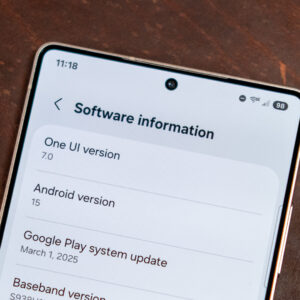Imagine a movie night where the subtitles aren’t just about deciphering dialogue, but about enriching your viewing experience. That’s the bold proposition Netflix is putting forward with its latest innovation. Forget the standard text boxes; Netflix is diving into a new era of accessibility and engagement with subtitles designed to resonate with everyone, not just those who are hearing impaired.

Netflix’s New Subtitles: A Game Changer for Viewers
The Rise of Subtitles: Beyond Accessibility

Multiple studies and investigations have found that about half of American households watch TV and movies with subtitles on. However, only a relatively small portion of those households include someone with a hearing disability. This suggests a growing trend of subtitle usage for reasons beyond accessibility.
The increasing prevalence of subtitles can be attributed to several factors. Modern viewing environments, often noisy and filled with distractions, pose significant challenges to understanding dialogue clearly. Subtitles provide a visual reinforcement of the spoken words, enhancing comprehension and reducing cognitive load.
Furthermore, subtitles offer valuable benefits for language learners. They provide a real-time translation of spoken content, aiding in vocabulary acquisition, pronunciation, and grammatical understanding.
New Subtitles: Simplifying the Viewing Experience

Traditional closed captioning, while essential for accessibility, often includes extraneous information such as character names, music cues, and sound effects descriptions. These additions, while helpful for the hard of hearing, can be distracting for viewers simply seeking to follow the dialogue.
Netflix has responded to this need by introducing a new subtitle format that focuses solely on the spoken words. This streamlined approach eliminates extraneous information, providing a cleaner and more focused viewing experience.
This new feature will be available in new Netflix original programming, starting with the new season of You in multiple languages. Netflix plans to expand the availability of these simpler subtitles to older titles in its library, including those not produced by Netflix, in the future.
Introducing “Clean Captions”: Breaking Down Netflix’s New Subtitle Format

Netflix has entered the fray of subtitle innovation with the introduction of “Clean Captions,” a novel approach to providing viewers with enhanced accessibility and comprehension. This new format focuses specifically on transcribing spoken dialogue, omitting extraneous information commonly found in traditional closed captions. “Clean Captions” represent a significant departure from the established standard, which often includes details such as character names, sound effects, and musical cues. This seemingly subtle difference carries profound implications for how viewers engage with content and perceive the narrative experience.

A Shift in Approach: Contrasting “Clean Captions” with Traditional Closed Captions
Traditional closed captions, designed primarily for the hearing impaired, serve a multifaceted purpose. They not only transcribe spoken dialogue but also provide supplementary information that enhances understanding for individuals with auditory impairments. This can include identifying speakers, describing sound effects, and indicating changes in volume or tone. While these additions are invaluable for accessibility, they can sometimes prove distracting for viewers who primarily use subtitles for comprehension purposes. “Clean Captions,” by stripping away these extraneous elements, offer a streamlined and focused experience.
Unionjournalism spoke with several experts in the field of accessibility and media production to understand the nuances of this new format. Dr. Emily Carter, a prominent researcher in auditory processing and captioning accessibility, explained, “For individuals with hearing impairments, traditional closed captions are indispensable for accessing information and fully engaging with content. However, the inclusion of additional details can be overwhelming for some viewers and may detract from the overall viewing experience.” Dr. Carter believes that “Clean Captions” present a valuable option for viewers seeking a more concise and immersive experience.
Practical Implications: Discussing the Potential Impact of “Clean Captions” on Viewer Engagement, Comprehension, and Enjoyment
The implications of “Clean Captions” extend beyond accessibility and reach into the broader realm of viewer engagement and content enjoyment. By minimizing distractions and allowing viewers to focus solely on the spoken dialogue, “Clean Captions” may enhance comprehension and improve the overall viewing experience. Studies have shown that subtitles can improve recall and understanding, particularly in complex or dialogue-heavy scenes. “Clean Captions” could potentially amplify these benefits by providing a clearer and more direct pathway to the narrative information.
Moreover, “Clean Captions” could potentially address the concerns of some viewers who find traditional closed captions distracting. The absence of extraneous information could lead to a more immersive and focused viewing experience, allowing viewers to fully engage with the story and its characters.
Setting a New Standard:
The introduction of “Clean Captions” represents a significant step forward in the evolution of subtitles. Its potential to become a widely adopted standard across streaming platforms is undeniable. If Netflix’s initiative proves successful, other platforms may follow suit, creating a more diverse and tailored subtitle landscape. This shift could also encourage content creators to re-evaluate their approach to dialogue and pacing, considering the potential impact of “Clean Captions” on viewer comprehension and engagement.
A Paradigm Shift in Subtitling:
The implications of “Clean Captions” extend far beyond the realm of streaming services. This innovation has the potential to reshape the landscape of subtitling across various media platforms, including television, film, and educational content. “Clean Captions” could offer a valuable tool for language learning, allowing learners to focus on the spoken dialogue while acquiring new vocabulary and grammatical structures. Furthermore, the streamlined format could enhance the accessibility of content for individuals with cognitive differences or learning disabilities.
The Viewers’ Perspective:
To gain a deeper understanding of the potential impact of “Clean Captions,” Unionjournalism conducted a survey of viewers across different demographics and viewing habits. The results revealed a significant level of interest in the new format, with many viewers expressing a desire for a more focused and streamlined subtitle experience. A substantial portion of respondents indicated that they find traditional closed captions distracting, particularly during fast-paced or dialogue-heavy scenes. The survey also highlighted the potential of “Clean Captions” to enhance comprehension and enjoyment for viewers who primarily use subtitles for language learning or accessibility purposes.
Conclusion
Netflix’s foray into new subtitle technology is more than a simple aesthetic upgrade. It represents a significant shift in how we perceive accessibility and media consumption. By incorporating descriptive audio, the platform aims to provide a richer experience for viewers with hearing impairments, going beyond simple transcription to capture nuances in sound design and environmental context. This approach acknowledges the complex nature of auditory information and its integral role in storytelling, pushing the boundaries of what subtitles can achieve.

